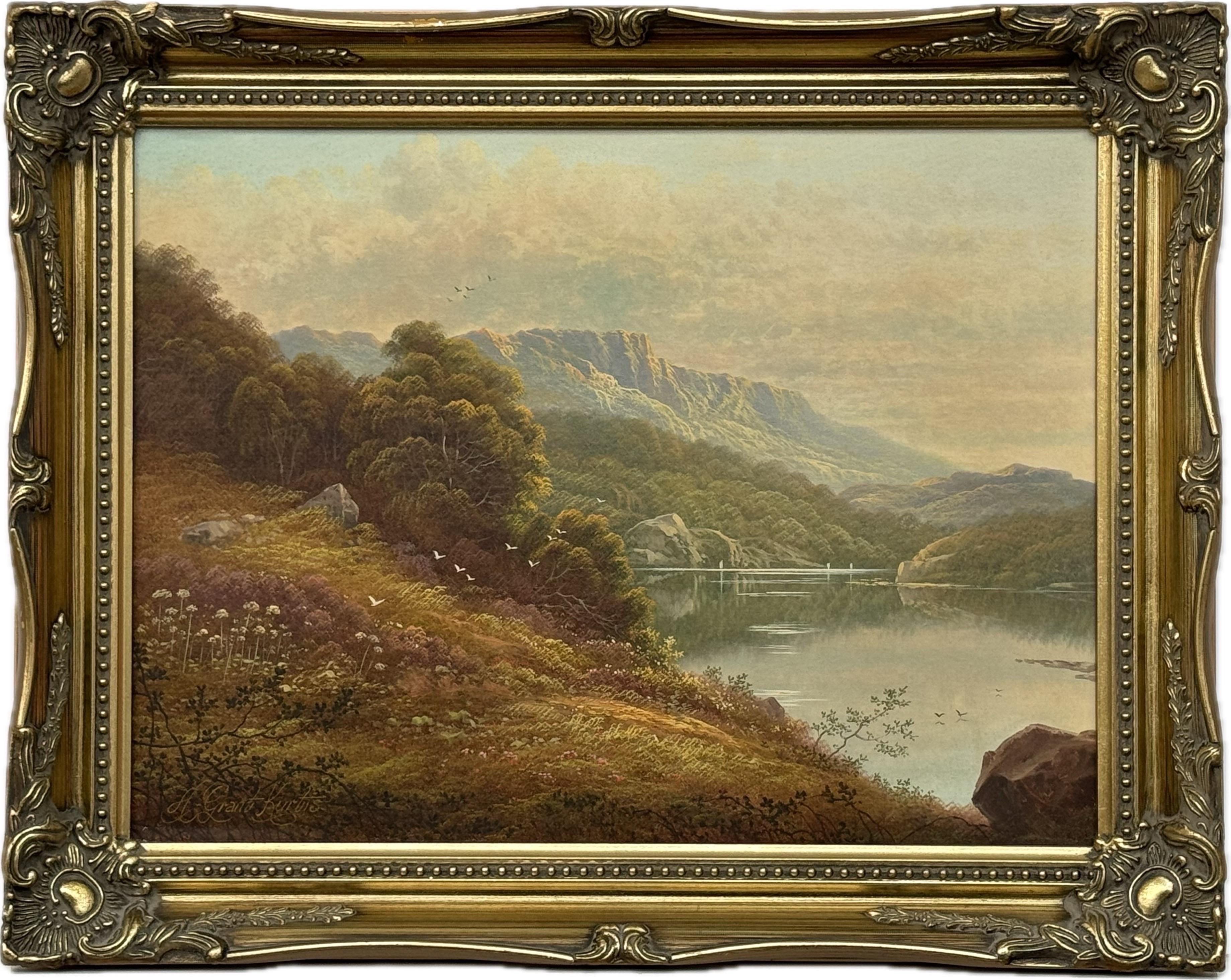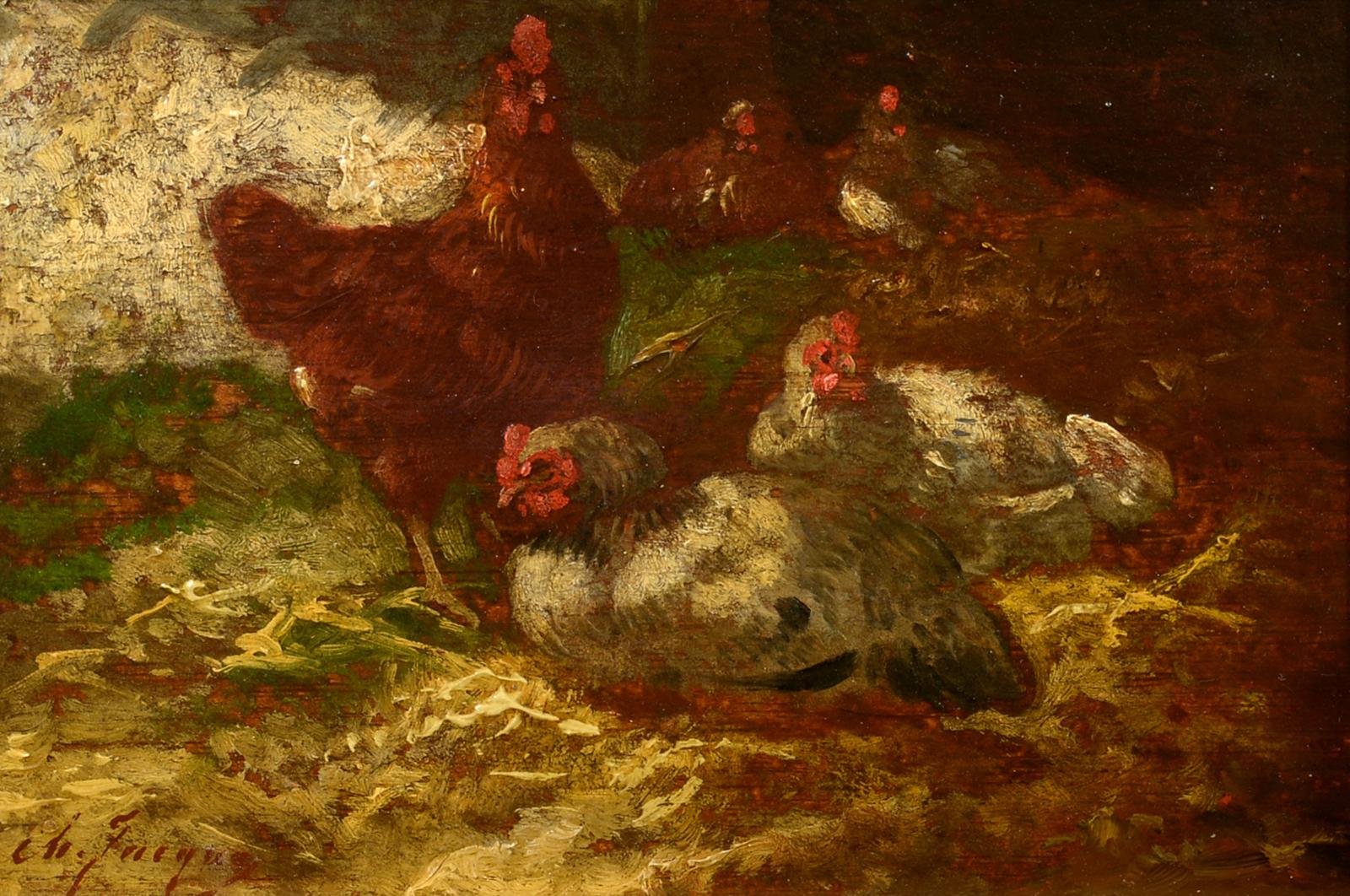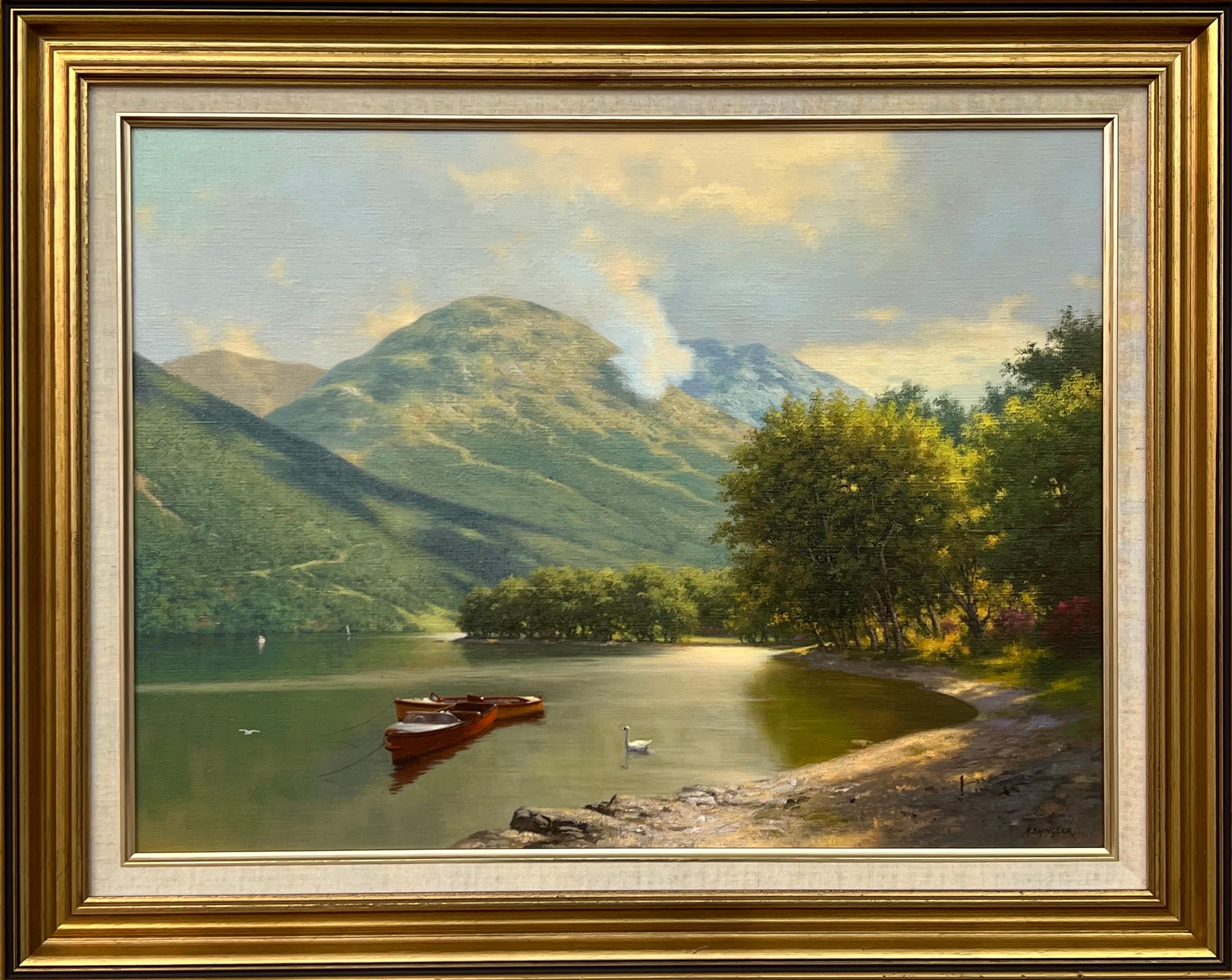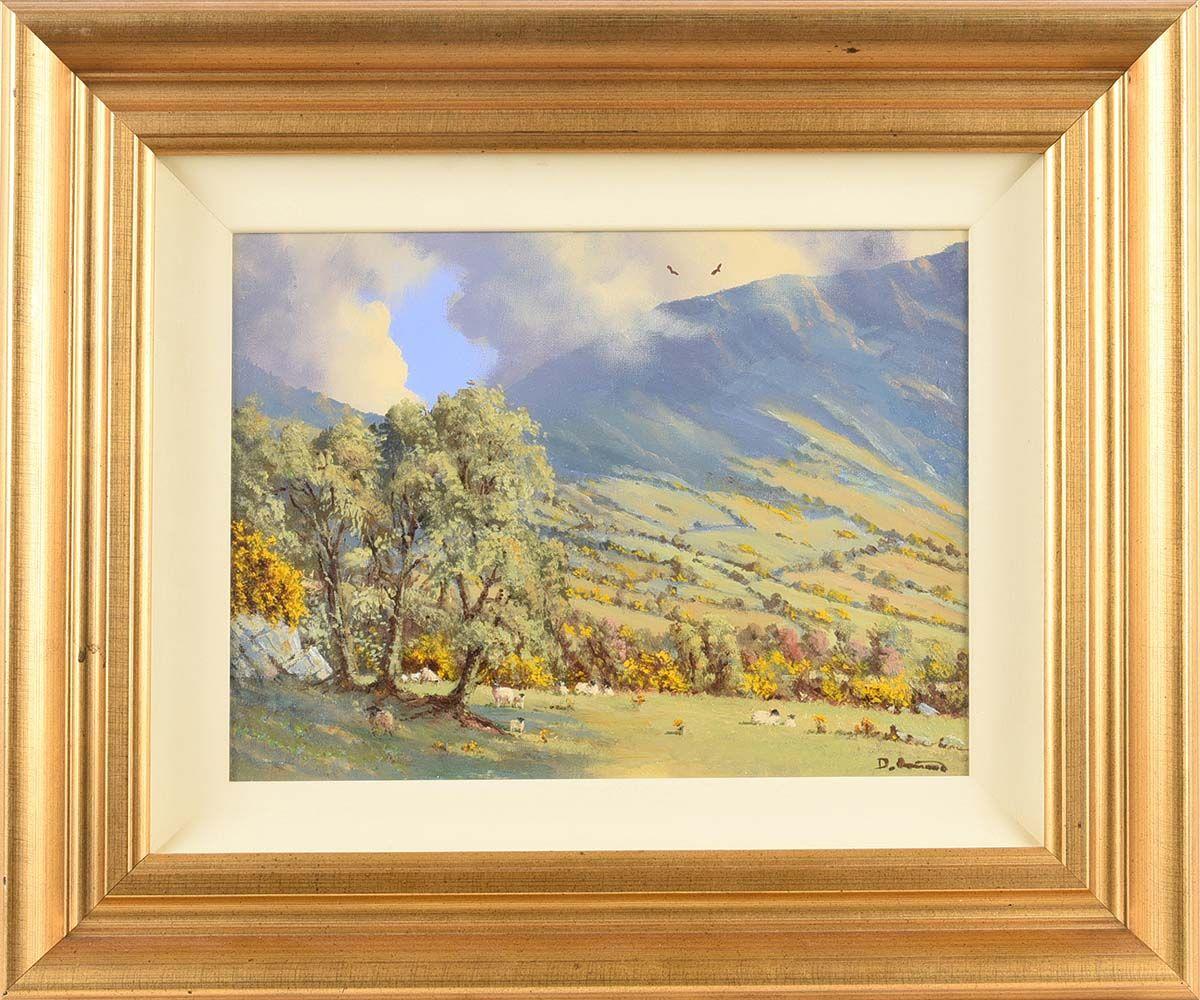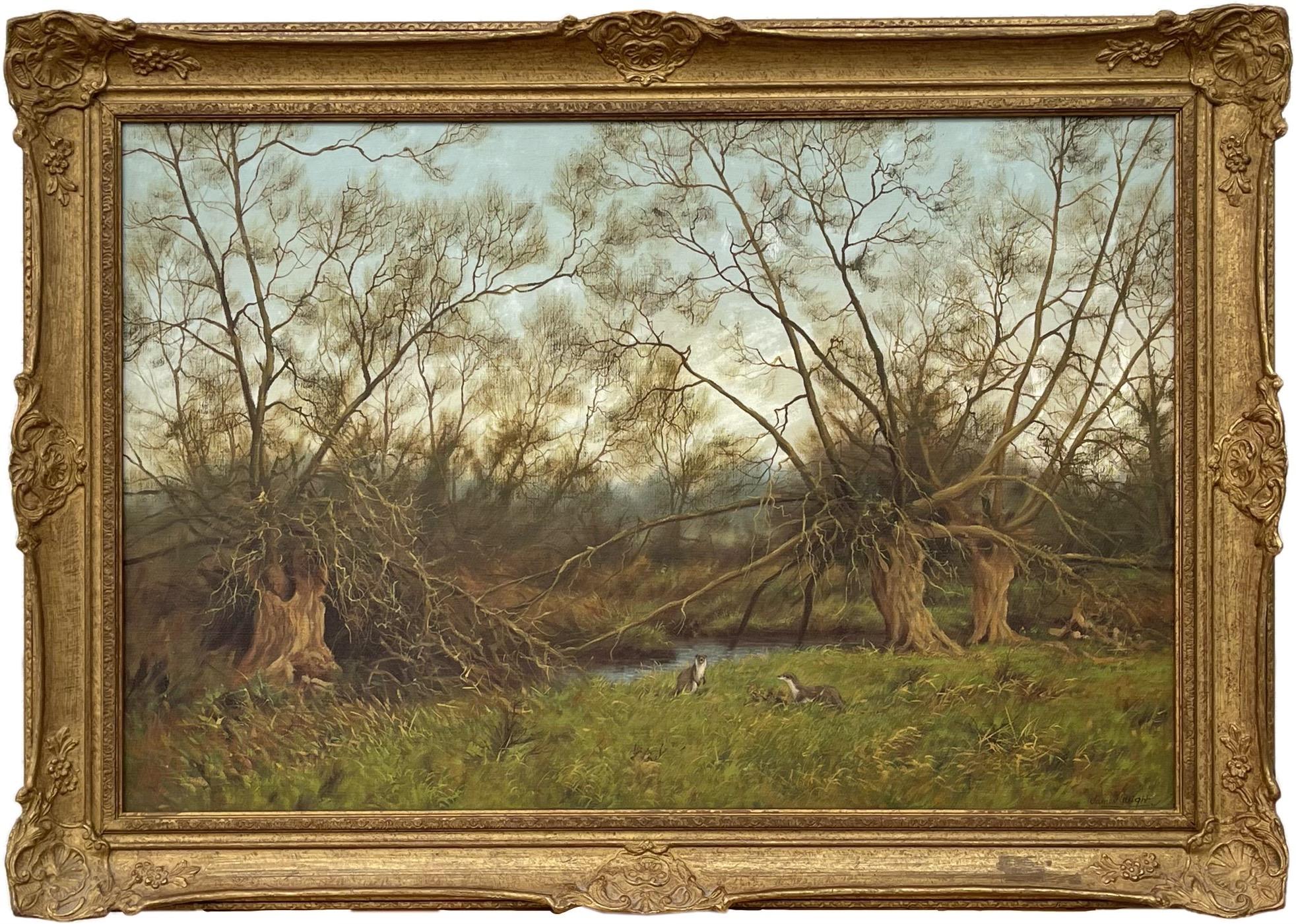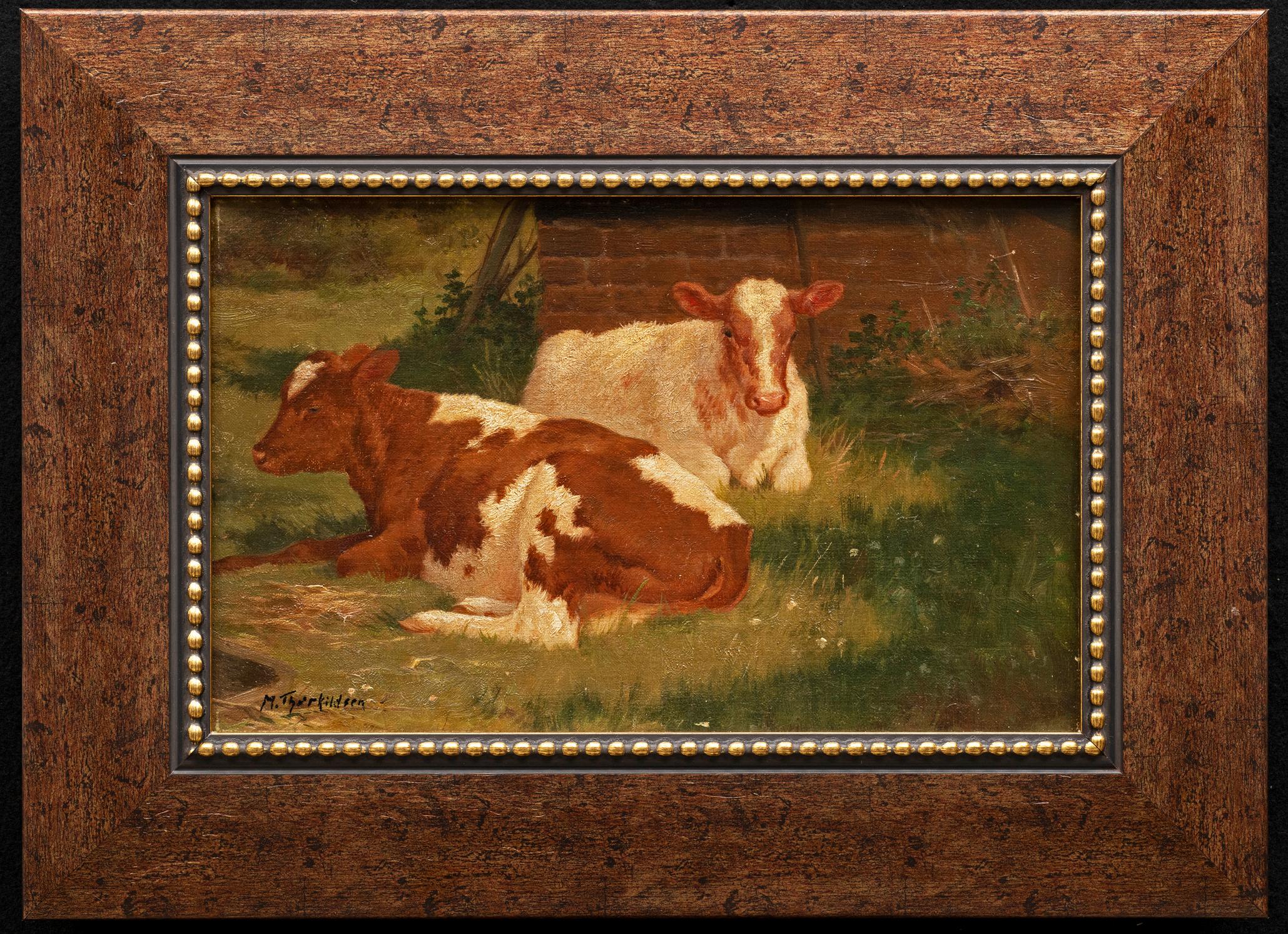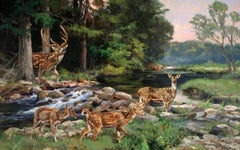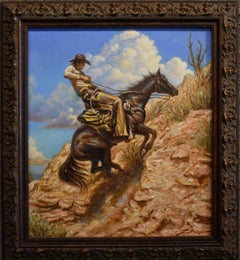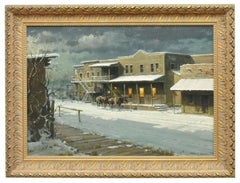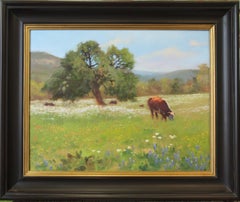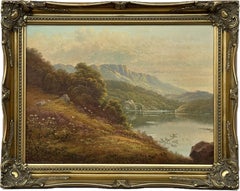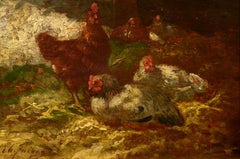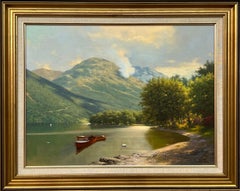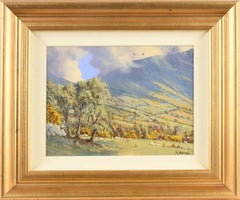Items Similar to "LAKOTA SIOUX BRAVE" DEPICTED IN 1840s 60 X 36 CANVAS SIZE 67 x 43 FRAME SIZE!
Want more images or videos?
Request additional images or videos from the seller
1 of 7
Ed Salazar"LAKOTA SIOUX BRAVE" DEPICTED IN 1840s 60 X 36 CANVAS SIZE 67 x 43 FRAME SIZE!New
New
About the Item
E. Salazar
Texas Artist
Image Size: 60 x 36
Frame Size: 67 x 43
Medium: Oil
Painted 2025
"Lakota Sioux Brave" depicted 1840s
The Lakota; Lakota: Lakȟóta or Lakhóta) are a Native American people. Also known as the Teton Sioux (from Thítȟuŋwaŋ), they are one of the three prominent subcultures of the Sioux people, with the Eastern Dakota (Santee) and Western Dakota (Wičhíyena). Their current lands are in North and South Dakota. They speak Lakȟótiyapi — the Lakota language, the westernmost of three closely related languages that belong to the Siouan language family.
The seven bands or "sub-tribes" of the Lakota are:
Sichangu (Brulé, Burned Thighs)
Oglala ("They Scatter Their Own")
Itazipcho (Sans Arc, Without Bows)
Hunpapha (Hunkpapa, "End Village", Camps at the End of the Camp Circle)
Mnikhowozu (Miniconjou, "Plant Near Water", Planters by the Water)
Sihasapa ("Blackfeet" or "Blackfoot")
Oohenunpa (Two Kettles)
Notable Lakota persons include Tȟatȟáŋka Íyotake (Sittingh Bull) from the Húnkpapȟa, Maȟpíya Ičáȟtagya (Touch the Clouds) from the Miniconjou; Heȟáka Sápa (Black Elk), Maȟpíya Lúta (Red Cloud), and Tamakhóčhe Theȟíla (Billy Mills) - all Oglála; Tȟašúŋke Witkó (Crazy Horse) from the Oglála and Miniconjou, and Siŋté Glešká (Spotted Tail) from the Brulé. Activists from the late 20th century to present include Russell Means (Oglála), and William Hawk Birshead (Hunkpapa, Oglala, Cheyenne, and Arapaho)
History
Early history
Scenes of battle and horse raiding decorate a muslin Lakota tipi from the late 19th or early 20th century
Early Lakota history is recorded in their winter counts (Lakota: waníyetu wówapi), pictorial calendars painted on hides or later recorded on paper. The 'Battiste Good winter count' records Lakota history to 900 CE when White Buffalo Calf Woman gave the Lakota people the White Buffalo Calf Pipe.
Siouan language speakers may have originated in the lower Mississippi River region and then migrated to or originated in the Ohio Valley. They were agriculturalists and may have been part of the Mound Builder civilization during the 9th–12th centuries CE. Lakota legend and other sources state they originally lived near the Great Lakes: "The tribes of the Dakota before European contact in the 1600s lived in the region around Lake Superior. In this forest environment, they lived by hunting, fishing, and gathering wild rice. They also grew some corn, but their locale was near the limit of where corn could be grown."
In the late 16th and early 17th centuries, Dakota Lakota speakers lived in the upper Mississippi Region in territory now organized as the states of Minnesota, Wisconsin, Iowa, and the Dakotas. Conflicts with Anishnaabe and Cree peoples pushed the Lakota west onto the Great Plains in the mid- to late-17th century. Around 1730 Cheyenne people introduced the Lakota to horses, which they called šuŋkawakaŋ ("dog [of] power/mystery/wonder"). After they adopted horse culture, Lakota society centered on the buffalo hunt on horseback. In 1660 French explorers estimated the total population of the Sioux (Lakota, Santee, Yankton, and Yanktonai) at 28,000. The Lakota population was estimated at 8,500 in 1805; it grew steadily and reached 16,110 in 1881. They were one of the few Native American tribes to increase in population in the 19th century, a time of widespread disease and warfare. By 2010 the number of Lakota had increased to more than 170,000, of whom about 2,000 still spoke the Lakota language (Laohotiyapi).
After 1720, the Lakota branch of the Seven Council Fires split into two major sects, the Saône, who moved to the Lake Traverse area on the South Dakota–North Dakota–Minnesota border, and the Oglála-Sičháŋǧu, who occupied the James River valley. However, by about 1750 the Saône had moved to the east bank of the Missouri River, followed 10 years later by the Oglála and Brulé (Sičháŋǧu). The large and powerful Arikara, Mandan, and Hidatsa villages had long prevented the Lakota from crossing the Missouri River. However, the great smallpox epidemic of 1772–1780 destroyed three-quarters of the members of these tribes. The Lakota crossed the river into the drier, short-grass prairies of the High Plains. These newcomers were the Saône, well-mounted and increasingly confident, who spread out quickly. In 1765, a Saône exploring and raiding party led by Chief Standing Bear discovered the Black Hills (the Paha Sapa), then the territory of the Cheyenne. Ten years later, the Oglála and Brulé also crossed the Missouri. Under pressure from the Lakota, the Cheyenne moved west to the Powder River country. The Lakota made the Black Hills their home.
Treaties and conflicts with the United States
Native peace commissioners in council with the Northern Cheyenne and Northern Arapaho, Fort Laramie, Wyoming
Initial United States contact with the Lakota during the Lewis and Clark Expedition of 1804–1806 was marked by a standoff. Lakota bands refused to allow the explorers to continue upstream, and the expedition prepared for battle, which never came.
Some bands of Lakota became the first indigenous people to help the United States Army in an inter-tribal war west of the Missouri, during the Arikara War in 1823. In 1843, the southern Lakota attacked the village of Pawnee Chief Blue Coat near the Loup in Nebraska, killing many and burning half of the earth lodges. The next time the Lakota inflicted a blow so severe to the Pawnee would be in 1873, during the Massacre Canyon battle near Republican River.
Lakota 1851 treaty territory (Area 408, 516, 584, 597, 598 and 632)
Nearly half a century later, after the United States had built Fort Laramie without permission on Lakota and Arapaho land, it negotiated the Fort Laramie Treaty of 1851 to protect European American travelers on the Oregon Trail. The Cheyenne and Lakota had previously attacked emigrant parties in a competition for resources, and also because some settlers had encroached on their lands. The Fort Laramie Treaty acknowledged Lakota sovereignty over the Great Plains in exchange for free passage for European Americans on the Oregon Trail for "as long as the river flows and the eagle flies". The U.S. government did not enforce the treaty restriction against unauthorized settlement, and Lakota and other bands attacked settlers and even emigrant trains as part of their resistance to this encroachment. Public pressure increased for the U.S. Army to punish them. On September 3, 1855, 700 soldiers under U.S. Brevet Major General William S. Harvey. avenged the Grattan massacre by attacking a Lakota village in Nebraska, killing about 100 men, women, and children. A series of short "wars" followed, and in 1862–1864, as Native American refugees from the "Dakota War of 1862" in Minnesota fled west to their allies in Montana and Dakota Territory. After the American Civil War increasing illegal settlement by whites on the Plains resulted in war again with the Lakota.
The Black Hills were considered sacred by the Lakota, and they objected to mining. Between 1866 and 1868 the U.S. Army fought the Lakota and their allies along the Bozeman Trail over U.S. forts built to protect miners traveling along the trail. Oglala Chief Red Cloud led his people to victory in Red Cloud's War. In 1868, the United States signed the Fort Laramie Treaty of 1868, exempting the Black Hills from all white settlement forever. But four years later gold was discovered there, and prospectors descended on the area. The Lakota attacks on settlers and miners were met by military force conducted by such army commanders as Lieutenant Colonel George Armstrong Custer. General Philip Sheridan encouraged his troops to hunt and kill the buffalo as a means of "destroying the Indians' commissary."
The allied Lakota and Arapaho bands and the unified Northern Cheyenne were involved in much of the warfare after 1860. They fought a successful delaying action against General George Crook's army at the Battle of the Rosebud, preventing Crook from locating and attacking their camp. A week later they defeated the U.S. 7th Cavalry. in 1876 at the Battle of the Little Bighorn at the Crow Indian Reservation (1868 boundaries). Custer attacked an encampment of several tribes, which was much larger than he realized. Their combined forces, led by Chief Crazy Horse, killed 258 soldiers, wiping out the entire Custer battalion and inflicting more than 50% casualties on the regiment. Although the Lakota beat Custer's army, the Lakota and their allies did not get to enjoy their victory over the U.S. Army for long. The U.S. Congress authorized funds to expand the army by 2,500 men. The reinforced U.S. Army defeated the Lakota bands in a series of battles, finally ending the Great Sioux War in 1877. The Lakota were eventually confined to reservations, prevented from hunting buffalo beyond those territories, and forced to accept government food distribution. They were largely dispersed throughout North and South Dakota, as well as other places around the United States.
January 17, 1891: They Even Fear His Horses at camp of Oglala band of Lakota at Pine Ridge, South Dakota, 3 weeks after the Wounded Knee Massacre, when 153 Lakota Sioux and 25 U.S. soldiers died
In 1877, some of the Lakota bands signed a treaty that ceded the Black Hills to the United States; however, the nature of this treaty and its passage were controversial. The number of Lakota leaders who backed the treaty is highly disputed. Low-intensity conflicts continued in the Black Hills. Fourteen years later, Sitting Bull was killed at Standing Rock reservation on December 15, 1890. The U.S. Army attacked Spotted Elk (aka Bigfoot)'s Minicoujou band of Lakota on December 29, 1890, at Pine Ridge, killing 153 Lakota (tribal estimates are higher), including numerous women and children, in the Wounded Knee Massacre.
- Creator:Ed Salazar (American)
- Creation Year:New
- Dimensions:Height: 60 in (152.4 cm)Width: 36 in (91.44 cm)Depth: 3 in (7.62 cm)
- More Editions & Sizes:Image Size: 60 X 36Price: $24,000
- Medium:
- Movement & Style:
- Period:
- Framing:Frame IncludedFraming Options Available
- Condition:
- Gallery Location:San Antonio, TX
- Reference Number:1stDibs: LU769316192242
About the Seller
5.0
Vetted Professional Seller
Every seller passes strict standards for authenticity and reliability
Established in 1974
1stDibs seller since 2017
95 sales on 1stDibs
Typical response time: 1 hour
- ShippingRetrieving quote...Shipping from: Fredericksburg, TX
- Return Policy
Authenticity Guarantee
In the unlikely event there’s an issue with an item’s authenticity, contact us within 1 year for a full refund. DetailsMoney-Back Guarantee
If your item is not as described, is damaged in transit, or does not arrive, contact us within 7 days for a full refund. Details24-Hour Cancellation
You have a 24-hour grace period in which to reconsider your purchase, with no questions asked.Vetted Professional Sellers
Our world-class sellers must adhere to strict standards for service and quality, maintaining the integrity of our listings.Price-Match Guarantee
If you find that a seller listed the same item for a lower price elsewhere, we’ll match it.Trusted Global Delivery
Our best-in-class carrier network provides specialized shipping options worldwide, including custom delivery.More From This Seller
View All"GUADALUPE ROMANCE" WILDLIFE AXIS DEER FAMILY TEXAS RIVER
By Luke Frazier
Located in San Antonio, TX
Luke Frazier
(Born 1970)
Utah Artist
Image Size: 30 x 48
Frame Size: 39 x 57
Medium: Oil
"Guadalupe Romance"
Biography
Luke Frazier (Born 1970)
Luke Frazier grew up hunting and fishing in the mountains of northern Utah. These early forays into nature instilled a kinship with the wildlife, and a passion for the outdoors. As a child he spent hours scribbling, sketching and sculpting wildlife. Later, his formal art training occurred at Utah State University, where he earned a Bachelors of Fine Arts degree in painting and a Masters of Fine Arts degree in illustration.
Every year, Frazier travels through Alaska, Canada, and the American West painting and photographing animals in their environment. His love of fly fishing and hunting is apparent in his work. Influenced by the art of Winslow Homer, Edgar Payne, Bruno Liljefors...
Category
2010s Realist Animal Paintings
Materials
Oil
"RIDIN' HIGH" COWBOY HORSE WESTERN ACTION MOTION NICE!!!
Located in San Antonio, TX
E. Salazar
Texas Artist
Image Size: 15 x 13
Frame Size: 19 x 17
Medium: Oil on Canvas
"Riding High"
Category
2010s Realist Landscape Paintings
Materials
Oil
"UNTITLED" WINTER SNOW SCENE
By Melvin Warren
Located in San Antonio, TX
Melvin Warren
(1920 - 1995)
Texas Artist
Image Size: 29 x 40
Frame Size: 37 x 49
Medium: Oil
Untitled
Biography
Melvin Warren (1920 - 1995)
Melvin Charles Warren...
Category
20th Century Impressionist Landscape Paintings
Materials
Oil
"FLOWERS ON HER DINNER TABLE" TEXAS HILL COUNTRY CATTLE
Located in San Antonio, TX
Chuck Mauldin
Born 1949
Fredericksburg Artist
Size: 22 x 28
Frame: 31 x 37
Medium: Oil
"Flowers On Her Dinner Table" Texas Hill Country
View details
A nati...
Category
20th Century American Impressionist Landscape Paintings
Materials
Oil
"HEREFORD TIME" CATTLE AND COWBOYS
Located in San Antonio, TX
Edward Lee Reichert
(1919-2011)
Texas Artist
Image Size: 21 x 33
Frame Size: 24.75 x 36.75
Medium: Oil
"Hereford Time"
Biography
Edward Lee Reichert (1919-2011)
Edward Reichert, architect, designer and artist, is a native Texan who has combined regional, national and international study and practice of the visual art and architecture since 1936. He is a versatile artist and designer, skilled in creating quality landscapes, portraits, architectural, western, religious and varied work in all media. After 36 years of architectural practice based in Houston in which he was involved in the design of more than 400 regional and international projects, he now devotes full time to painting.
Best known of his art works are his designs of stained and faceted art glass which include 100 panels designed for the First United Methodist Church of Houston. In 1983, he wrote and jointly published with the Church, Windows Sharing God’s Caring, an art book with photographs by his wife Elizabeth, illustrating and describing these panels and the historic sanctuary windows.
While attending The University of Texas in Austin he served as art editor of the university publication Architecture, Engineering and Industry (1938-41). After receiving his Bachelor of Architecture Degree and the Alpha Rho Chi Architectural Medal in 1941, he was awarded scholarships for continued studies a M.I.T., Harvard, and Yale. As a Naval Reserve Officer during World II, he authored and illustrated Naval Intelligence publications. He became a Registered Architect in Texas in 1947, AIA member since 1951 and NCARB certified since 1974. He has worked and studied in England, Europe and Canada.
Invitational study and travel with Master Painter, Lajos Markos...
Category
21st Century and Contemporary American Impressionist Landscape Paintings
Materials
Oil
"JAYWALKER" TEXAS LONGHORN CATTLE
Located in San Antonio, TX
Chuck Mauldin
Born 1949
Fredericksburg Artist
Size: 16 x 20
Frame: 23 x 27
Medium: Oil
"Jaywalker"
A native of Texas, Chuck Mauldin has been painting in oil since the age of twelve. His interest in watercolor and pencil drawing grew during his years spent in Louisiana. With his move back to Texas, he has renewed his focus on oil painting, using this medium in a realistic yet painterly style. Striving to quickly capture color and mood with a direct "alla prima" technique is one of his main objectives in painting outdoors on-location. Cows, cowboys and Native Americans often enrich the landscape in his studio work, while anything can inspire his plein air paintings.
Workshops with Charles Sovek...
Category
20th Century American Impressionist Landscape Paintings
Materials
Oil
You May Also Like
Tranquil Reflections: A Serene Landscape of Mountain Lake by British Artist
By Andrew Grant Kurtis
Located in Preston, GB
Tranquil Reflections: A Serene Landscape of Mountain Lake in the Scottish Highlands by British Artist, Andrew Grant Kurtis M.A.(Lon) B.Des.(Hons) L.S....
Category
20th Century Realist Landscape Paintings
Materials
Canvas, Oil
Andrew Grant KurtisTranquil Reflections: A Serene Landscape of Mountain Lake by British Artist, 1984
$1,483 Sale Price
20% Off
"Nesting, " French 19th c Realist, Louvre Museum, Charming Small Oil of Chickens
By Charles-Emile Jacque
Located in Wiscasset, ME
Born in 1813 in Paris, Charles Emile Jacque began his training in etching as an apprentice to a map engraver. By 1833 he was painting and debuted at the Paris Salon and contributed r...
Category
19th Century Realist Animal Paintings
Materials
Oil, Wood Panel
Tranquil Lake Scene with Boats & Swan in the Mountains of the Scottish Highlands
Located in Preston, GB
Tranquil Lake Scene with Boats & Swan in the Mountains of the Scottish Highlands by 20th Century British Landscape Artist, Howard Shingler.
Art measur...
Category
Late 20th Century Realist Landscape Paintings
Materials
Canvas, Paint, Oil
Rural Mountain Scene with Sheep in Ireland by Post War Modern Irish Artist
By David Overend
Located in Preston, GB
Rural Mountain Scene with Sheep in Ireland by Post War Modern Irish Artist, David Overend.
Art measures 16 x 12 inches
Frame measures 25 x 21 inches
...
Category
Mid-20th Century Realist Landscape Paintings
Materials
Canvas, Oil
Painting of the English Countryside with River Otters by Modern British Artist
By James Wright
Located in Preston, GB
Traditional Oil Painting of the English Countryside with River Otters by Modern British Landscape Artist
Art measures 30 x 20 inches
Frame measures 36 x 26 inches
James Wright...
Category
Late 20th Century Realist Landscape Paintings
Materials
Canvas, Cotton Canvas, Oil
"Cows at Rest in Front of the Barn" Michael Therkildsen (Danish, 1850 - 1925)
By Michael Therkildsen
Located in SANTA FE, NM
"Cows at Rest in Front of the Barn"
Michael Therkildsen (Danish, 1850 - 1925)
Oil on canvas
9 x 14 3/4 (15 3/4 x 21 1/4 frame) inches
Signed lower left
The son of farmer Hans Micha...
Category
Early 20th Century Realist Animal Paintings
Materials
Canvas, Oil
$2,950 Sale Price
32% Off
Recently Viewed
View AllMore Ways To Browse
36 X 60
60 X 60 Painting
Acrylic Art Of Palm Trees
Oil Paintings By C Walters
19th Century Australian Art
Jury Chair
Wayne Thiebaud Landscapes
Antique Wooden Pencil
Salvador Mexican
Paris Street Scene Painting Large Canvas Painting
Lancaster Oil Painting
17th Century Village Paintings
Paintings Of Scottish Castles
Impressionist Croatia
Chatham Painting
Wheat Field Painting
Wolf Kahn Oil Painting
Signed A Lefebvre
